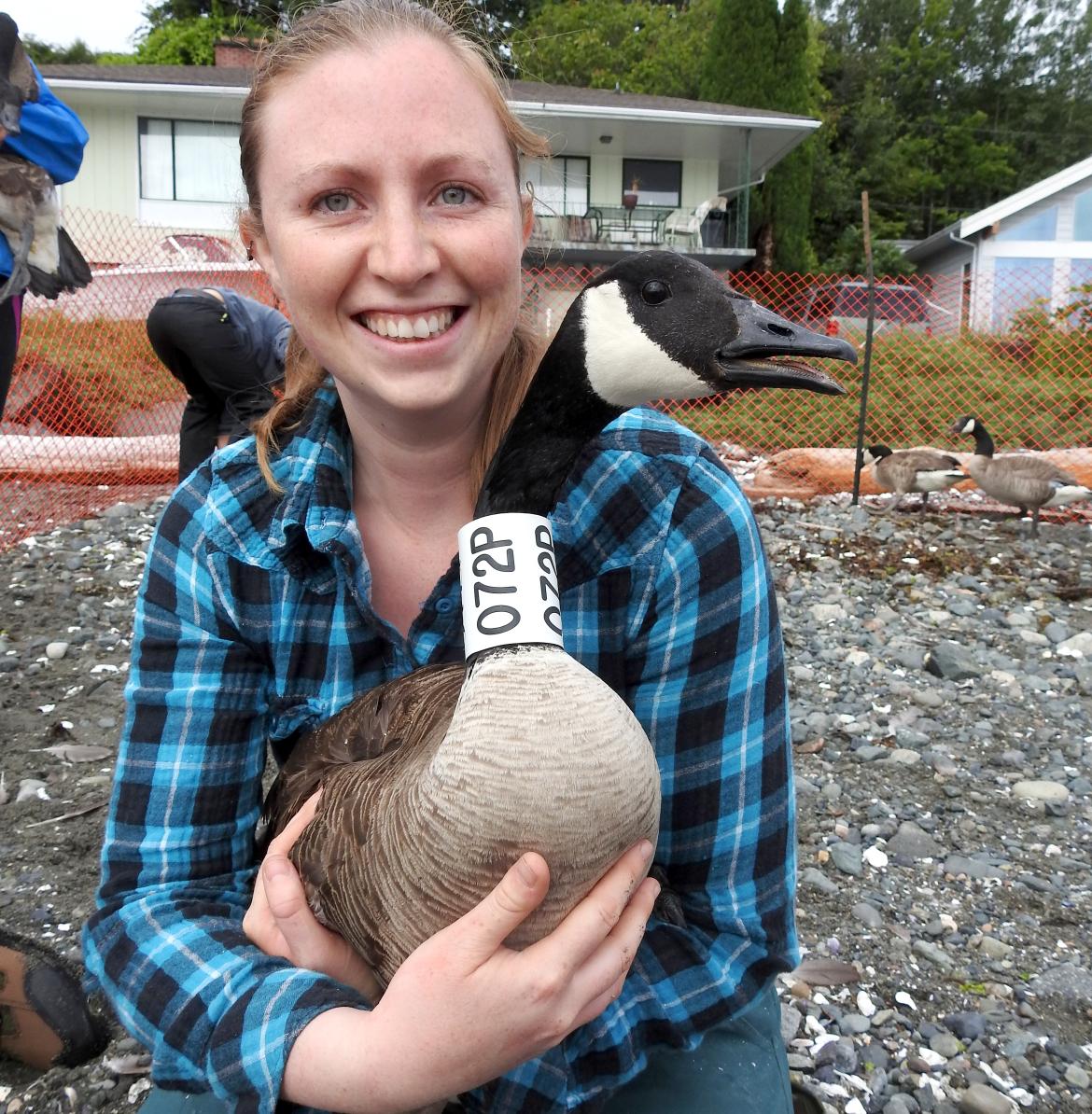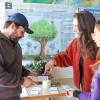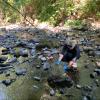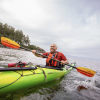
Thanks to a group of volunteer citizen-scientists like Millie Coleing, who helped band and monitor geese this summer, a VIU research project is collecting valuable data on Canada Geese movements and habitat use around Nanaimo.
December 14, 2016 - 9:45am
After banding 200 Canada Geese, VIU student researcher Stew Pearce is starting to get a picture of where they are going, and what they are doing
Have wings will travel. That’s the underlying message Vancouver Island University (VIU) student researcher Stew Pearce is seeing in his data after spending more than four months monitoring the 200 Canada Geese he and his team of volunteers collared this summer in Nanaimo.
After tagging the birds with highly visible white collars on their necks that have three numbers and the letter ‘P’ displayed, the fourth year biology student and his supervising professor Dr. Eric Demers set up a website where citizens could report sightings.
Since June the website has generated around 240 bird reports from almost 50 locations. Along with the website reports, Pearce follows a specified route every three weeks to conduct surveys of 60 different sites to get a better picture of the collared birds’ movements, habitat use and overall numbers.
He says some of what they are finding is expected. There is a core population regularly spotted in places such as Nanaimo’s Quarterway and Forest Park Elementary schoolyards, Buttertubs Marsh, some agricultural fields and the Nanaimo Cemetery. But what surprised him is how far some of the collared birds have travelled.
“As we checked their movements and the reports that come in from the website, we were surprised to find some fairly long distance travelers,” said Pearce.
Four of the tagged birds were spotted just west of Portland, Oregon. A couple more were down around Eugene, Oregon and others showed up in Washington and over on the Sunshine Coast. Six collared birds have been harvested by hunters, and some collars have fallen off and been turned in.
“While the reported number of sightings across the border are relatively small, we know that there will be many more birds in those regions that aren’t reported. When we started, we thought we were dealing with a fairly local population of birds that may range up and down Vancouver Island but not much further than that. This shows that is not the case,” said Pearce.
Pearce received reports from birds that flew across borders or were shot by hunters because along with the white collars, each bird received a smaller metal band on the leg with a web address that connects to the U.S. Geological Survey Bird Banding Laboratory. That program is universally recognized across Mexico, the U.S. and Canada.
Pearce is supported by VIU, the City of Nanaimo and regionally by volunteer citizen scientists who keep an eye out for the tagged birds. The volunteers came together to do a one day, simultaneous ‘blitz survey’ in November to get a better idea of how many Canada Geese were around during a narrow window of time.
“A larger group spread out to conduct a simultaneous count while I did my survey route and together we came up with an estimate of almost 2,000 Canada Geese. That included Lantzville, Nanaimo and Cedar. These are pretty big numbers and it’s why the City of Nanaimo is interested in our work,” said Pearce.
Dr. Demers says while the research VIU is undertaking is concerned with movement it’s easy to see that if 300 Canada Geese spend an entire day in a schoolyard, it’s going to have an impact. He says many communities across Vancouver Island are currently working on their own management plans including Victoria, Parksville, Port Alberni and Campbell River. Together the municipalities are in the process of forming a regional management committee to share information and work together on the issue.
“The data we are collecting will help show movement and the habitat the geese are using. We can use this information to see how that changes over time and season-to-season, which will be very useful,” said Demers. “This data is important because if a municipality is trying to manage a local population and 300 more birds show up from somewhere else, then they might be fighting a losing battle. With this kind of research you answer some questions but invariably come up with many more so we plan to continue with some level of monitoring for a much longer period of time to add to our understanding.”
Pearce is planning another Canada Geese survey ‘blitz’ for January which will include VIU students, graduates and community members. He is expected to have a final research paper completed for April. To report a sighting and to learn more about the project go to VIU Canada Goose Project.
-30-
MEDIA CONTACT:
Dane Gibson, Communications Officer, Vancouver Island University
P: 250.740.6288 | C: 250.618.7296 | E: Communications@viu.ca | T: @viunews
Tags: Research






